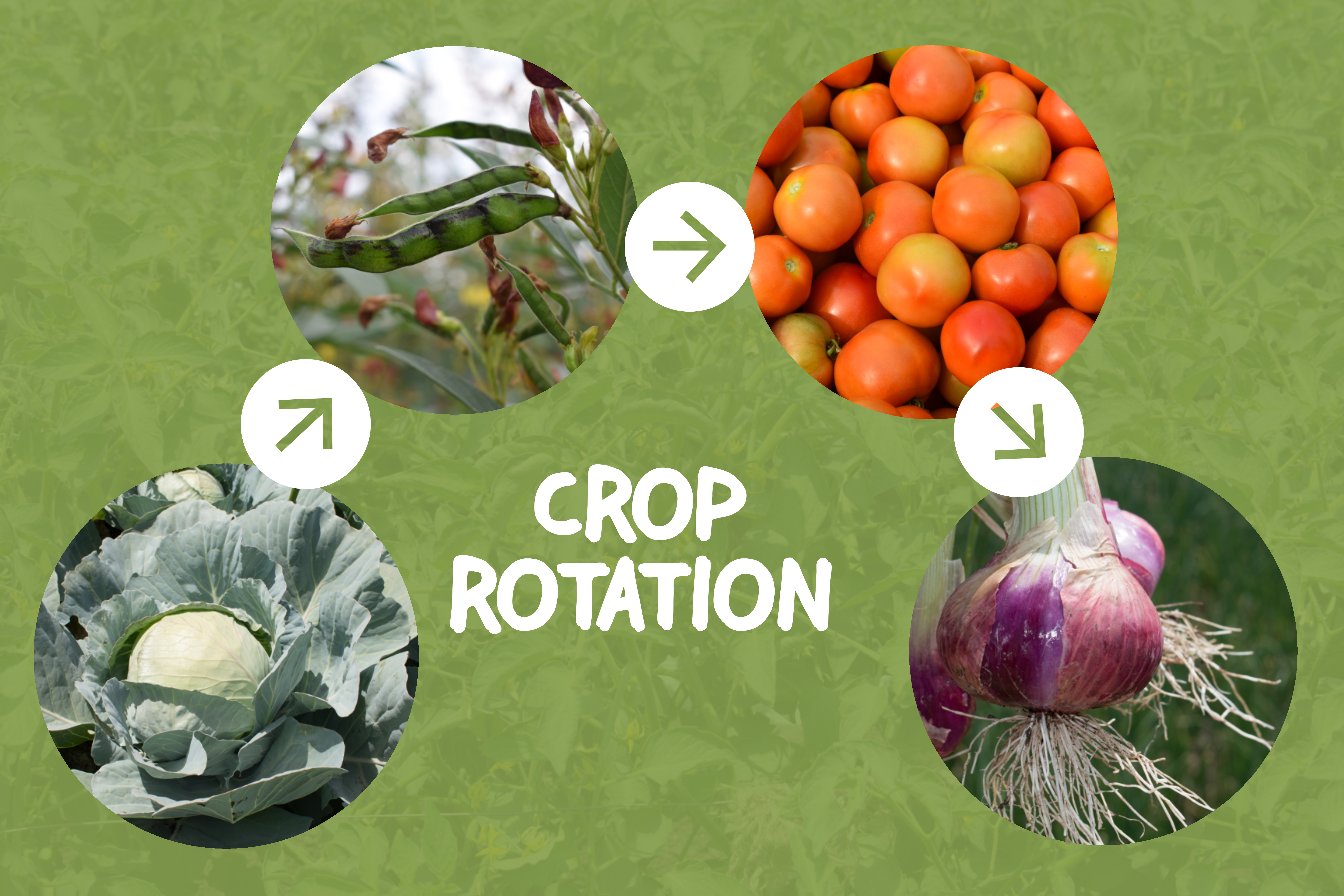 Crop rotation involves planting different crops in a sequence on the same land, with each new crop being planted following the previous crop's harvest. Repeatedly planting the same crop continuously draws the same nutrients out of the soil, while providing a consistent home for pests or diseases with a preference for that crop. Over time, this depletes soil productivity and builds reliance on fertilizers and pesticides to maintain crop yields.
Crop rotation involves planting different crops in a sequence on the same land, with each new crop being planted following the previous crop's harvest. Repeatedly planting the same crop continuously draws the same nutrients out of the soil, while providing a consistent home for pests or diseases with a preference for that crop. Over time, this depletes soil productivity and builds reliance on fertilizers and pesticides to maintain crop yields.
Crop rotation breaks up and reverses those harmful trends. Rotations can be a simple order of two or three crops, or a more intricate rotation of ten or more. The idea is to alternate between crops that complement or address each other's impacts on the soil: for example, if a farm grows corn, which consumes high levels of nitrogen in the soil, after the harvest the farmer may switch to planting beans that return nitrogen back to the soil.
Rotating crops improves soil health by maintaining sufficient levels of important nutrients without involving harmful chemical synthetic inputs, as well as boosting biomass and biodiversity with differing root structures. Disrupting pest and disease cycles also creates greater crop yields while reducing the necessity and cost of fighting those pests and diseases.
Learn more about the various options for conducting crop rotations and how to implement them on the CA Field Office Technical Guide website.
The following sections highlight some of the most applicable and effective methods for the Sacramento region and provide access to additional sources to learn more.
